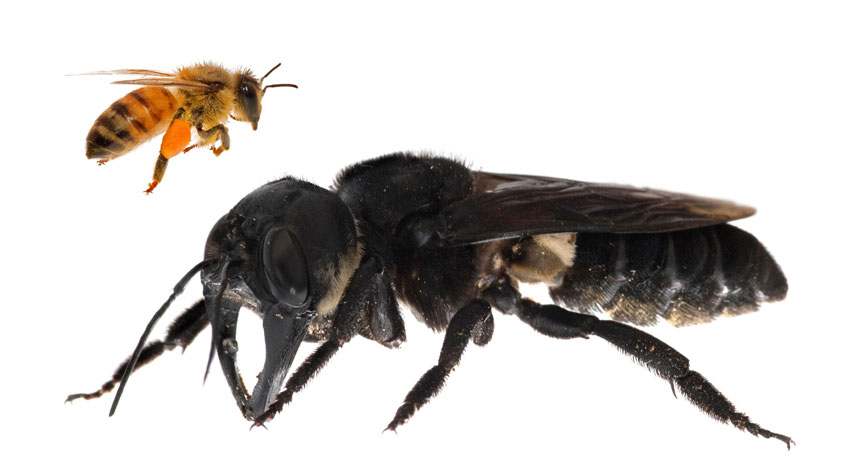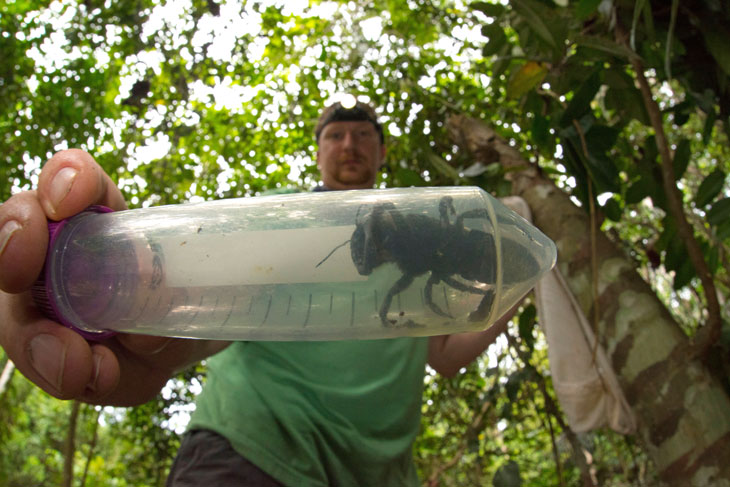
GOLIATH OF BEES A honeybee’s size pales in comparison to that of a the recently rediscovered Wallace’s giant bee, as seen in this composite image.
Clay Bolt
Everything about Wallace’s giant bee is goliath: It reaches an average body length of around 4 centimeters — about the size of a walnut — and has a wingspan of over 7.5 centimeters. Yet despite its eye-popping size, it’s been nearly 40 years since the world’s largest bee (Megachile pluto) was officially sighted in the wild.
So when Eli Wyman, an entomologist at Princeton University, had an opportunity to hunt for the elusive bee, he jumped at the chance. He and two other scientists, along with photographer Clay Bolt, set off in January for a two-week expedition to forests on two of only three Indonesian islands where the bee has ever been found.
It’s thought that the females build a home by using their formidable jaws to burrow into termite nests and line the tunnels with resin to ward off termites. So while trekking in the oppressive jungle heat, the team stopped at every termite nest spotted on the trunk of a tree and watched for 20 minutes for a telltale bore hole or a bee emerging.
“After several days of searching and looking at a lot of these termite nests and not seeing anything, I think we all kind of internally just accepted that we weren’t going to be successful,” Wyman says.

As the search was ending, the team decided to check one last nest only about 2.4 meters off the ground — and found the signature hole. Wyman, standing on a small platform, glanced inside and tapped the hole a few times with a stiff blade of grass. Moments later, a lone female Wallace’s giant bee emerged.
“We were just all over the moon,” Wyman says. “It was a great relief and incredibly exciting.”
The team captured the female and put her inside a tented enclosure to observe her before releasing her back to her nest. She buzzed and opened and closed her enormous jaws. And yes, she had a stinger to match her goliath size, one she presumably uses, though Wyman wasn’t willing to find that out firsthand. “She was the most precious thing on the planet to us,” Wyman says.
The nonprofit organization Global Wildlife Conservation, which included Wallace’s giant bee on its 25 Most Wanted lost species list, announced the bee’s rediscovery February 21. While there are no set plans to look for more bees, the team hopes the rediscovery sparks efforts to protect the habitat from deforestation. In a blogpost, Bolt noted: “Just knowing that this bee’s giant wings go thrumming through this ancient Indonesian forest helps me feel that, in a world of so much loss, hope and wonder still do exist.”






